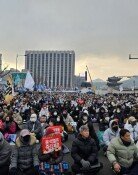No breakthrough without gaining strength in exports
No breakthrough without gaining strength in exports
Posted July. 27, 2022 07:56,
Updated July. 27, 2022 07:56
Korea's growth rate stayed in the 0 percent range for two consecutive quarters. The Bank of Korea said that Korea's real gross domestic product (GDP) rose 0.7 percent in the second quarter of this year compared to the first quarter. This is a minuscule 0 percent-growth-range following the first quarter, which was 0.6 percent. On Tuesday, the International Monetary Fund (IMF) revised downward its global growth forecast, lowering Korea's growth forecast for this year by 0.2 percentage points to 2.3 percent.
The nation’s weakening growth is worrisome, but more disconcerting is that exports have been decreasing. Exports, which buttressed the Korean economy with an increase of 3.6 percent quarter-on-quarter in the first quarter, drove down the growth rate in the second quarter, dropping 3.1 percent due to ramifications of war in Ukraine and lockdowns in China. The growth rate would have been even lower if private consumption had not increased by 3.0 percent as people began “revenge spending” in the second quarter, when the COVID-19 pandemic was on hiatus. If consumption shrinks due to the coronavirus resurgence, the situation will worsen in the third quarter.
Major export-focusing companies have already begun to brace for the earnings deterioration. POSCO, which witnessed a whopping 14 percent drop in operating profit despite an increase in sales year-on-year in the second quarter, declared emergency management. Samsung Electronics and SK Hynix have launched emergency management as well in line with the forecast that prices of memory chip will fall sharply due to a slowdown in demand stemming from economic slowdown. The fact that companies' facility investment fell to -1.0 percent in the second quarter also means that corporate investor sentiment has begun to freeze. Recently, unlike Korea, which has raised the benchmark interest rate in line with the U.S. tightening policy, the Japanese central bank has frozen interest rates and allowed the Japanese yen to weaken, resulting in a compromised price competitiveness of Korean products in the global market.
As Korea is heavily dependent on exports, the key to overcoming current hardships should ultimately be found in exports as well. Yet, measures such as expansion of trade finance and export support for SMEs that the relevant ministries and agencies have come up so far are not enough to resolve the underlying issues. Therefore, the government should formulate a new export strategy in detail, such as increasing friend-shoring in connection with the United States and the European Union, re-establishing trade relations with China, which is changing into a structure where Korea is on the short end, and building a supply chain that will allow securing of raw materials more stably.
At the same time, the government and the public sector need to collaborate with the private sector to generate exports of nuclear power plants and sophisticated weaponry to the global market in earnest. Companies also need to capture new opportunities to trailblaze exports, by taking the plunge in trying to win bids in large-scale construction and plant projects in the Middle East, where riches are overflowing thanks to high oil prices.
Headline News
- Joint investigation headquarters asks Yoon to appear at the investigation office
- KDIC colonel: Cable ties and hoods to control NEC staff were prepared
- Results of real estate development diverged by accessibility to Gangnam
- New budget proposal reflecting Trump’s demand rejected
- Son Heung-min scores winning corner kick







